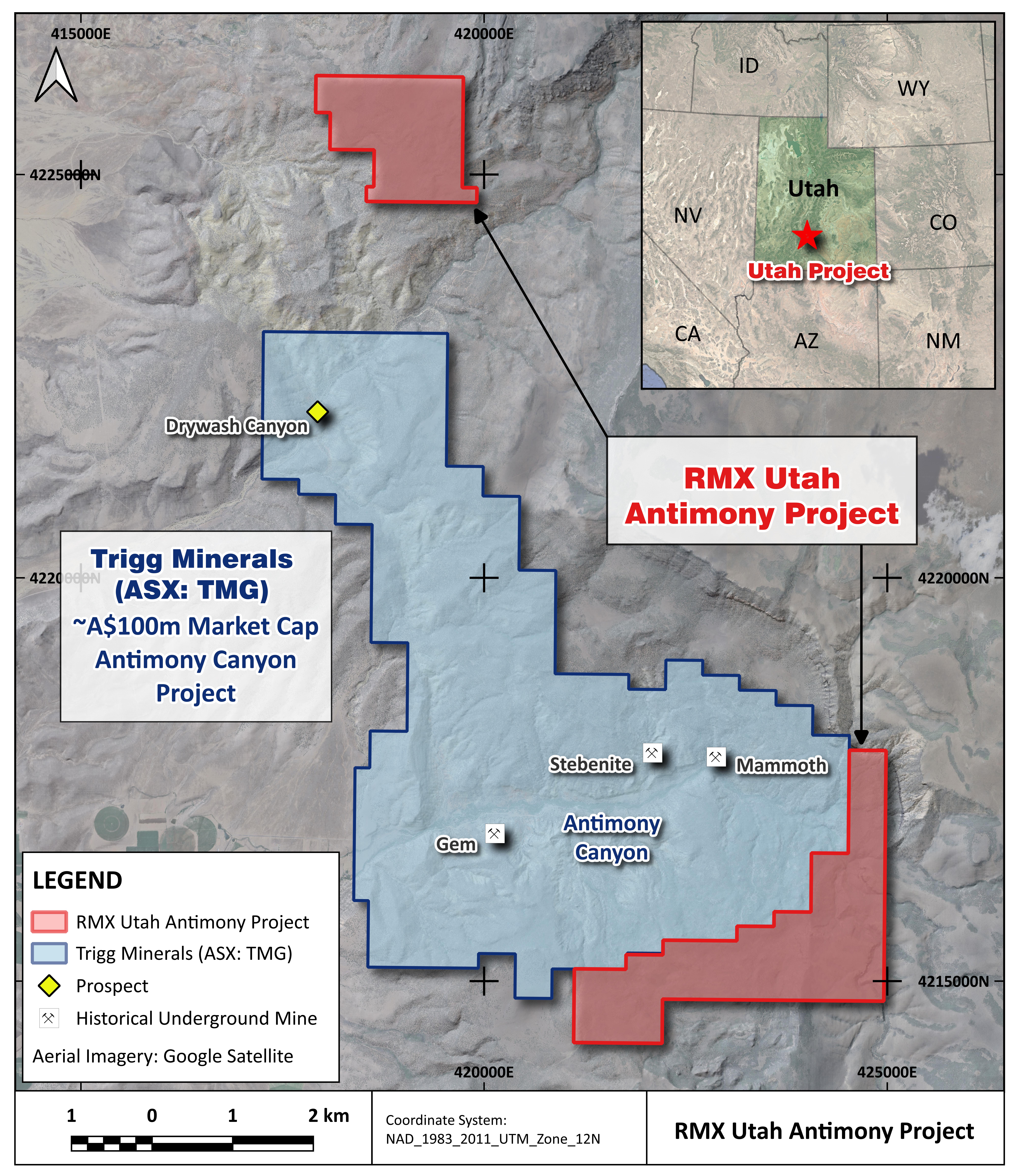Red Mountain joins critical minerals rush in Utah’s antimony mining district

Red Mountain has secured 87 claims in Utah adjacent to Trigg Minerals’ renowned Antimony Canyon project. Pic: Getty Images
- RMX secures 87 Utah claims adjacent to major Trigg Minerals antimony project
- Same high-grade geological formations expected to extend into RMX tenements
- Initial exploration to map structures before drilling beneath shallow cover
Special Report: Red Mountain Mining has expanded on its antimony focus with the securing of 87 claims in Utah’s prospective antimony mining district.
Antimony mineralisation in the district is mostly stratabound within the early Palaeocene fluvial and volcaniclastic sandstone and conglomerate of the Flagstaff Formation and closely associated with north-south orientated fault.
Providing a hint of just what might be present for Red Mountain Mining (ASX:RMX), its new Utah Antimony project directly adjoins Trigg Minerals’ (ASX:TMG) Antimony Canyon project – one of the largest and highest grade projects of its kind in the US with a conceptual exploration target of 12.8-15.6Mt at a grade range of 0.75-1.5% antimony.
Notably, the Flagstaff Formation and controlling structures that outcrop within Antimony Canyon are interpreted to extend under shallow cover into the Utah Antimony project.
“The board considers that the Utah Antimony Project is a compelling project, with significant potential to tap into the desire of the US Government to secure its critical mineral supply chains by rapidly building domestic supply where possible,” managing director Lincoln Liu said.
“RMX’s tenements lie adjacent to Trigg Minerals’ Antimony Canyon Project, which is considered to be a leading contender to become one of the first modern domestic producers of antimony for the American market.
“All the geological elements critical to Trigg’s high-grade mineralisation are thought to extend beneath shallow cover into our claims, so we are confident of making similar discoveries.”

Antimony district
The antimony mining district was discovered in 1879 and produced high-grade antimony ores from multiple small-scale mines from 1880 to about 1908 and intermittently into the 1960s.
At Antimony Canyon and Drywash Canyon, the dominant host for mineralisation is the early palaeocene Flagstaff Formation, which comprises carbonate-rich fluvial sandstone and conglomerate.
Recent exploration carried out by TMG concluded that a brittle felsic volcaniclastic horizon within the formation is the most prospective host unit, but that mineralisation is present at multiple stratigraphic levels, implying potential for both laterally and vertically extensive mineralisation.
Its channel sampling within and adjacent to historical workings also delivered multiple samples with antimony contents in excess of 10% and a top result of 1.5m at 33.2% antimony.
Given the same formation and structures at Antimony Canyon is interpreted to extend into RMX’s tenements, the company believes that its Utah Antimony project has high potential for finding similar mineralisation.
Planned exploration
RMX’s initial exploration priority is to map out the undercover extensions of north-south structures known to be associated with mineralisation at Antimony Canyon and Drywash Canyon.
This will initially use publicly available magnetic and topographic data that will be augmented if necessary by high resolution drone magnetics and surface reconnaissance mapping.
Prospective areas defined by this work will be followed up with more intensive work such as ground electromagnetics to directly detect sulphide mineralisation beneath shallow cover.
Shallow trenching and/or auger and RAB drilling likely to be required in order to effectively test for antimony through the transported cover.
This article was developed in collaboration with Red Mountain Mining, a Stockhead advertiser at the time of publishing.
This article does not constitute financial product advice. You should consider obtaining independent advice before making any financial decisions.
Related Topics

UNLOCK INSIGHTS
Discover the untold stories of emerging ASX stocks.
Daily news and expert analysis, it's free to subscribe.
By proceeding, you confirm you understand that we handle personal information in accordance with our Privacy Policy.








